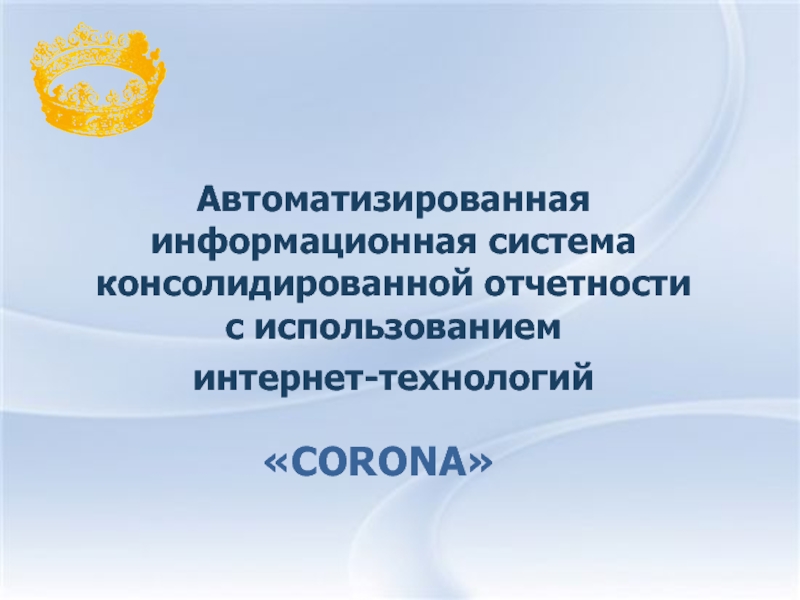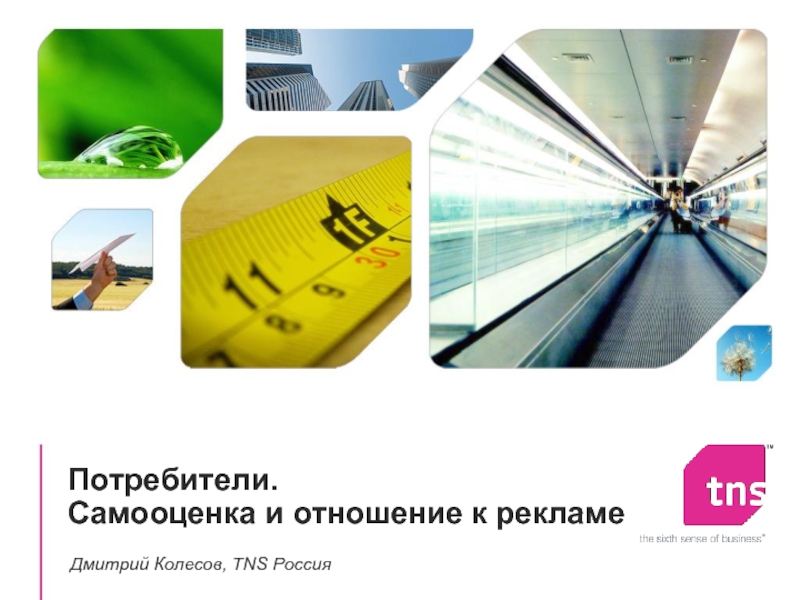- Главная
- Разное
- Дизайн
- Бизнес и предпринимательство
- Аналитика
- Образование
- Развлечения
- Красота и здоровье
- Финансы
- Государство
- Путешествия
- Спорт
- Недвижимость
- Армия
- Графика
- Культурология
- Еда и кулинария
- Лингвистика
- Английский язык
- Астрономия
- Алгебра
- Биология
- География
- Детские презентации
- Информатика
- История
- Литература
- Маркетинг
- Математика
- Медицина
- Менеджмент
- Музыка
- МХК
- Немецкий язык
- ОБЖ
- Обществознание
- Окружающий мир
- Педагогика
- Русский язык
- Технология
- Физика
- Философия
- Химия
- Шаблоны, картинки для презентаций
- Экология
- Экономика
- Юриспруденция
Control of seakeeping презентация
Содержание
Слайд 1
Odessa National Maritime Academy
CONTROL OF
SEAKEEPING
Theory and Ship's Construction Department
Igor F.
Слайд 2
CONTROL OF
SEAKEEPING
Main seakeeping qualities:
Floatability
Stability
Damage trim and stability (floodability)
Ship’s strength
Ship resistance
Ship
Ship motion
Manoeuvrability
2
Odessa National Maritime Academy
Theory and Ship's Construction Department
Слайд 3
CONTROL OF
SEAKEEPING
Ship’s equilibrium position under still water condition
and equilibrium equations:
3
Odessa National
Theory and Ship's Construction Department
Слайд 4
CONTROL OF
SEAKEEPING
Types of trim diagram
4
Odessa National Maritime Academy
Theory and Ship's
Peterson diagram
Firsoff diagram
Слайд 5
INTERNATIONAL MARITIME ORGANIZATION
IMO
Stability Requirements
INTERNATIONAL CODE ON INTACT STABILITY, 2008
(2008 IS CODE)
RESOLUTION
(adopted on 20 May 2011)
5
General criteria
1. Criteria regarding initial stability
2. Criteria regarding righting lever curve properties
3. Severe wind and rolling criterion (weather criterion)
Слайд 6
IMO
Stability Requirements
IS CODE CONTAINS INTACT STABILITY CRITERIA FOR THE FOLLOWING TYPES
.1 cargo ships;
.2 cargo ships carrying timber deck cargoes;
.3 passenger ships;
.4 fishing vessels;
.5 special purpose ships;
.6 offshore supply vessels;
.7 mobile offshore drilling units;
.8 pontoons; and
.9 cargo ships carrying containers on deck and containerships.
6
GENERAL CRITERIA
All criteria shall be applied for all conditions of loading.
Free surface effects shall be accounted for in all conditions of loading.
Each ship shall be provided with a stability booklet, approved by the Administration, which contains sufficient information to enable the master to operate the ship in compliance with the applicable requirements contained in the Code.
Each ship shall be provided with a stability booklet, approved by the Administration, which contains sufficient information to enable the master to operate the ship in compliance with the applicable requirements contained in the Code. If a stability instrument is used as a supplement to the stability booklet for the purpose of determining compliance with the relevant stability criteria such instrument shall be subject to the approval by the Administration
Слайд 7
IMO
Stability Requirements
Criteria regarding initial stability
The initial metacentric height GM0 shall not
7
Criteria regarding righting lever curve properties
1 The area under the righting lever curve (GZ curve) shall not be less than 0.055 metre-radians up to ϴ = 30° angle of heel and not less than 0.09 metre-radians up to ϕ = 40° or the angle of down-flooding ϴf, if this angle is less than 40°. Additionally, the area under the righting lever curve (GZ curve) between the angles of heel of 30° and 40° or between 30° and ϴf, if this angle is less than 40°, shall not be less than 0.03 metre-radians.
2 The righting lever GZ shall be at least 0.2 m at an angle of heel equal to or greater than 30°.
3 The maximum righting lever shall occur at an angle of heel not less than 25°. If this is not practicable, alternative criteria, based on an equivalent level of safety, may be applied subject to the approval of the Administration.
ϴf is an angle of heel at which openings in the hull, superstructures or deckhouses which cannot be closed weathertight immerse. In applying this criterion, small openings through which progressive flooding cannot take place need not be considered as open.
Слайд 8
IMO
Stability Requirements
8
Severe wind and rolling criterion
The ability of a ship to withstand the combined effects of beam wind and rolling shall be demonstrated, with reference to figure presented below as follows:
.1 the ship is subjected to a steady wind pressure acting perpendicular to the ship’s centreline which results in a steady wind heeling lever (lw1);
.2 from the resultant angle of equilibrium (ϴ0), the ship is assumed to roll owing to wave action to an angle of roll (ϴ1) to windward. The angle of heel under action of steady wind (ϴ0) should not exceed 16° or 80% of the angle of deck edge immersion, whichever is less;
.3 the ship is then subjected to a gust wind pressure which results in a gust wind heeling lever (lw2); and
.4 under these circumstances, area b shall be equal to or greater than area a, as indicated in figure below:
Слайд 10
IMO
Stability Requirements
10
where the angles in figure
ϕ0 = angle of heel under action of steady wind
ϕ1 = angle of roll to windward due to wave action ϕ2 = angle of down-flooding (ϕf) or 50° or ϕc, whichever is less,
where:
ϕf = angle of heel at which openings in the hull, superstructures or deckhouses which cannot be closed weathertight immerse.
In applying this criterion, small openings through which progressive flooding cannot take place need not be considered as open
ϕc = angle of second intercept between wind heeling lever lw2 and GZ curves.
Слайд 12
INTERNATIONAL CODE
FOR THE SAFE CARRIAGE OF GRAIN IN BULK
RESOLUTION MSC.23(59)
(adopted
12
Stability Requirements
1. The initial metacentric height, after correction for the free surface effects of liquids in tanks, shall not be less than 0.3 m.
2. The angle of heel due to the shift of grain shall not be greater then 12° or the angle at which the deck edge is immersed, whichever is the lesser.
3. In the statical stability diagram, the net of residual area between the heeling arm curve and the righting arm curve up to the angle of heel of maximum difference between the ordinates of the two curves, or 40° or the angle of flooding (Θf), whichever is the least, shall in all conditions of loading be not less than 0.075 metre-radians.
Слайд 13
INTERNATIONAL CODE
FOR THE SAFE CARRIAGE OF GRAIN IN BULK
RESOLUTION MSC.23(59)
(adopted
13
Слайд 14
INTERNATIONAL CODE
FOR THE SAFE CARRIAGE OF GRAIN IN BULK
RESOLUTION MSC.23(59)
(adopted
14
Слайд 15
INTERNATIONAL CODE
FOR THE SAFE CARRIAGE OF GRAIN IN BULK
RESOLUTION MSC.23(59)
(adopted
15
Relations between grain level, compartment’s volume V, СG altitude z, horizontal Mgy and vertical Mgz moments due to grain shifting in hold and tweendeck
Слайд 16
INTERNATIONAL STABILITY REQUIREMENTS
FOR THE SAFE CARRIAGE OF NON-COHESIVE
SOLID BULK CARGO
16
1. The initial metacentric height, after correction for the free surface effects of liquids in tanks, shall not be less than 0.70 m.
2. The angle of heel due to the shift of cargo shall not be greater then 12° or the angle at which the deck edge is immersed, whichever is the lesser.
3. In the statical stability diagram, the net of residual area between the heeling arm curve and the righting arm curve up to the angle of heel of maximum difference between the ordinates of the two curves, or 40° or the angle of flooding (Θf), whichever is the least, shall in all conditions of loading be not less than 0.120 metre-radians.
Слайд 17
INTERNATIONAL DAMAGE TRIM AND STABILITY
(SOLAS) REQUIREMENTS
17
A
SCOPE OF ANALYSIS AND DOCUMENTATION ON BOARD
1. The scope of subdivision and damage stability analysis is determined by the required damage stability standard and aims at providing the ship’s master with clear intact stability requirements. In general, this is achieved by determining KG-respective GM-limit curves, containing the admissible stability values for the draught range to be covered.
2. Within the scope of the analysis thus defined, all potential or necessary damage conditions will be determined, taking into account the damage stability criteria, in order to obtain the required damage stability standard. Depending on the type and size of ship, this may involve a considerable amount of analyses.
Слайд 18
INTERNATIONAL DAMAGE TRIM AND STABILITY
(SOLAS) REQUIREMENTS
18
SCOPE
3. Referring to SOLAS chapter regulation 19, the necessity to provide the crew with the relevant information regarding the subdivision of the ship is expressed, therefore plans should be provided and permanently exhibited for the guidance of the officer in charge. These plans should clearly show for each deck and hold the boundaries of the watertight compartments, the openings therein with means of closure and position of any controls thereof, and the arrangements for the correction of any list due to flooding. In addition, Damage Control Booklets containing the aforementioned information should be available.
Слайд 19
INTERNATIONAL DAMAGE TRIM AND STABILITY
(SOLAS) REQUIREMENTS
19
GENERAL
For the checking of the input data, the following should be submitted:
.1 main dimensions;
.2 lines plan, plotted or numerically;
.3 hydrostatic data and cross curves of stability (including drawing of the buoyant hull);
.4 definition of sub-compartments with moulded volumes, centres of gravity and permeability;
.5 layout plan (watertight integrity plan) for the sub-compartments with all internal and external opening points including their connected subcompartments, and particulars used in measuring the spaces, such as general arrangement plan and tank plan. The subdivision limits, longitudinal, transverse and vertical, should be included;
.6 light service condition;
.7 load line draught;
.8 coordinates of opening points with their level of tightness (e.g., weathertight, unprotected);
Слайд 20
INTERNATIONAL DAMAGE TRIM AND STABILITY
(SOLAS) REQUIREMENTS
20
GENERAL
For the checking of the input data, the following should be submitted:
.9 watertight door location with pressure calculation;
.10 side contour and wind profile;
.11 cross and down flooding devices and the calculations thereof according to resolution MSC.245(83) with information about diameter, valves, pipe lengths and coordinates of inlet/outlet;
.12 pipes in damaged area when the destruction of these pipes
Слайд 21
INTERNATIONAL DAMAGE TRIM AND STABILITY
(SOLAS) REQUIREMENTS
21
DOCUMENTATION
1
.1 subdivision length Ls;
.2 initial draughts and the corresponding GM-values;
.3 required subdivision index R; and
.4 attained subdivision index A with a summary table for all contributions for all damaged zones.
2 Results for each damage case which contributes to the index A:
.1 draught, trim, heel, GM in damaged condition;
.2 dimension of the damage with probabilistic values p, v and r;
.3 righting lever curve (including GZmax and range) with factor of survivability s;
.4 critical weathertight and unprotected openings with their angle of immersion; and
.5 details of sub-compartments with amount of in-flooded water/lost buoyancy with their centres of gravity.
Слайд 22
INTERNATIONAL DAMAGE TRIM AND STABILITY
(SOLAS) REQUIREMENTS
22
DOCUMENTATION
3
Слайд 23
INTERNATIONAL DAMAGE TRIM AND STABILITY
(SOLAS) REQUIREMENTS
23
DEFINITIONS
Subdivision
The maximum possible vertical extent of damage above the baseline is ds + l2,5 m.
Freeboard deck Bulkhead deck
Light service draught (dl) – The light service draught (dl) represents the lower draught limit of the minimum required GM (or maximum allowable KG) curve. It corresponds, in general, to the ballast arrival condition with l0 % consumables for cargo ships. For passenger ships, it corresponds, in general, to the arrival condition with l0 % consumables, a full complement of passengers and crew and their effects, and ballast as necessary for stability and trim. The l0 % arrival condition is not necessarily the specific condition that should be used for all ships, but represents, in general, a suitable lower limit for all loading conditions. This is understood to not include docking conditions or
other non-voyage conditions.
Слайд 25
INTERNATIONAL DAMAGE TRIM AND STABILITY
(SOLAS) REQUIREMENTS
25
ATTAINED
In case of cargo ships greater than 100 m in length Ls: ;
In case of passenger ships: ; were N=N1+2N2
N1 – number of persons for whom lifeboats are provided;
N2 – number of persons (including officers and crew) the ship is permitted to carry in excess of N1
REQUIRED SUBDIVISION INDEX R
Слайд 26
INTERNATIONAL DAMAGE TRIM AND STABILITY
(SOLAS) REQUIREMENTS
26
ATTAINED
The attained subdivision index A is determined by a formula for the entire probability as the sum of the products for each compartment or group of compartments of the probability that a space is flooded, multiplied by the probability that the ship will not capsize or sink due to flooding of the considered space. In other words, the general formula for the attained index can be given in the form:
Слайд 27
INTERNATIONAL DAMAGE TRIM AND STABILITY
(SOLAS) REQUIREMENTS
27
ATTAINED
Subscript i represents the damage zone (group of compartments) under consideration within the watertight subdivision of the ship. The subdivision is viewed in the longitudinal direction, starting with the aftmost zone/compartment.
The value of pi represents the probability that only the zone i under consideration will be flooded, disregarding any horizontal subdivision, but taking transverse subdivision into account. Longitudinal subdivision within the zone will result in additional flooding scenarios, each with its own probability of occurrence.
The value of si represents the probability of survival after flooding the zone i under consideration.
Слайд 30
INTERNATIONAL DAMAGE TRIM AND STABILITY
(SOLAS) REQUIREMENTS
30
The
.1 which particular space or group of adjacent spaces is flooded;
.2 the draught, trim and intact metacentric height at the time of damage;
.3 the permeability of affected spaces at the time of damage;
.4 the sea state at the time of damage; and
.5 other factors such as possible heeling moments due to unsymmetrical weights.
Слайд 31
INTERNATIONAL DAMAGE TRIM AND STABILITY
(SOLAS) REQUIREMENTS
31
The
.1 the probability that the longitudinal centre of damage occurs in just the region of the ship under consideration;
.2 the probability that this damage has a longitudinal extent that only includes spaces between the transverse watertight bulkheads found in this region;
.3 the probability that the damage has a vertical extent that will flood only the spaces below a given horizontal boundary, such as a watertight deck;
.4 the probability that the damage has a transverse penetration not greater than the distance to a given longitudinal boundary; and
.5 the probability that the watertight integrity and the stability throughout the flooding sequence is sufficient to avoid capsizing or sinking.
Слайд 32
INTERNATIONAL DAMAGE TRIM AND STABILITY
(SOLAS) REQUIREMENTS
32
EXTENT
Longitudinal extent: 1/3 or 14.5 m (whichever is the less).
2. Transverse extent measured inboard of ship side at right angles to the centre line at the level of the deepest subdivision load line: 1/5 of the ship breadth B or 11.5 m (whichever is the less).
3. Vertical extent: from the base line upwards without limit.
Слайд 33
DAMAGE TRIM AND STABILITY
32
Emergency / Contingency
- Sound the general alarm
- Inform master
- Inform engine control room
- Ensure that all watertight spaces are enclosed properly
- Identify the reason for the flooding
- If a structural hull failure has occurred, determine the extent of the damage to the hull of the own vessel:
- by visual check
- by sounding of all relevant spaces, bilges and tanks
- by checking the drafts as possible
- by checking the list of the vessel
- check the sea surface for bunker and or cargo spills
Слайд 34
DAMAGE TRIM AND STABILITY
32
Emergency / Contingency
Consider the need for emergency pumping capacity to counter the rate of flooding.
Consider beaching of the ship if necessary and possible
- Collect evidence and save data on Voyage Data Recorder
- Vessel's position should be available for satellite terminal and other automatic distress transmitters
Слайд 35
DAMAGE TRIM AND STABILITY
32
Emergency / Contingency
In the event of a sudden and unexpected list at sea:
- Sound the general emergency alarm
- Try to manoeuvre the vessel such as to reduce rolling
- Stop the following operations immediately including closing of all relevant valves: ballast operations; fuel transfer operations
- Determine risk of capsizing and prepare lifeboats for launching
- Close all openings and watertight spaces
- Try to seek a lee
- Determine the cause of the list:
- by sounding all relevant spaces, bilges and tanks
- by checking the cargo holds and cargo lashings
- by checking the drafts (if possible)
- by checking the extent of the unexpected list (if possible)
- by checking the sea surface for bunker and / or cargo spills
Note: Do not act before you are sure that your action will not worsen the situation.
Слайд 36
DAMAGE TRIM AND STABILITY
32
Emergency / Contingency
- Consider the need for emergency pumping capacity to counter the rate of flooding if applicable and consult the emergency plan for flooding additionally
- Consider requesting assistance, for example having a tug stand by
- Consult your stability computer to avoid excessive stress and shear forces and check the possibilities to reduce the list and return the vessel to a stable position:
- by ballasting or deballasting (if absolutely necessary even in empty fuel tanks)
- by transferring of fuel or liquid cargo
- by jettison of parts of the cargo and / or bunkers (Consider pollution implications of any discharge made to sea)
Note: Damage stability and longitudinal stress calculations can be obtained by GL emergency service for damaged condition seaworthiness calculation on a 24-hour basis (refer to SOPEP)
Слайд 37
DAMAGE TRIM AND STABILITY
32
Emergency / Contingency
- Notify your ship manager
- Collect evidence and document the course of events in the deck logbook
Слайд 38
DAMAGE TRIM AND STABILITY
32
Emergency / Contingency
In the event of a sudden and unexpected list during loading, discharging, ballasting or deballasting in port:
- Sound the general emergency alarm
- Stop the following operations immediately including closing of all relevant valves:
- cargo operations
- ballast operations
- bunkering operations
- fuel transfer operations
- Determine risk of capsizing evacuate all personnel from vessel if considered necessary
- Close all openings and watertight spaces
Слайд 39
DAMAGE TRIM AND STABILITY
32
Emergency / Contingency
- Determine the cause of the list:
- by sounding all relevant spaces, bilges and tanks
- by checking the cargo holds and cargo lashings
- by checking the drafts
- by checking the extent of the unexpected list
- by checking the sea surface for bunker and / or cargo spills
Note: Do not act before you are sure that your action will not worsen the situation.
- Consider the need for emergency pumping capacity to counter the rate of flooding if applicable and consult the emergency plan for flooding additionally
Consider requesting assistance, for example having a tug stand by
Слайд 40
DAMAGE TRIM AND STABILITY
32
Emergency / Contingency
- Consult your stability computer to avoid excessive stress and shear forces and check the possibilities to reduce the list and return the vessel to a stable position:
- by discharging of parts of the cargo
- by ballasting or deballasting (if absolutely necessary even in empty fuel tanks)
- by transferring of fuel or liquid cargo
- by jettison of parts of the cargo and/or bunkers (Consider pollution implications of any discharge made to sea)
Note: Damage stability and longitudinal stress calculations can be obtained by class emergency service for damaged condition seaworthiness calculation on a 24-hour basis (refer to SOPEP).
- Notify your ship manager
- Collect evidence and document the course of events in the deck logbook
Слайд 57
SHIP MOTION
49
VOCABULARY
Sloshing – плескание
Induced – индуцированный,
Crest – гребень
Damping – затухание, гашение
Springing – пружинить, прыгать
Transient – скоротечный, временный
Girder – балка
Surge – волны, повышение, подниматься
Sway – качание, качаться, колебаться, шатать
Heave – волнение, подъем, поднимать, швырять
Roll – крен, вращаться
Pitch – наклон, шаг резьбы и т.п.
Yaw – рыскание, отклонение
Слайд 58
SHIP MOTION
49
TRADITIONAL PROBLEMS RELATED WITH SHIP
Vertical acceleration and relative vertical motions between the ship and wave surface are important responses.
Accelerations determine loads on cargo, equipment and are an important reason for seasickness. The relative vertical motions can be used to evaluate the possibility and damage due to slamming and water on deck (deck wetness, or green water).
Slamming means impact between the ship and the water.
For a ship it is important to avoid slamming as well as deck wetness because of the resulting local damage of the structures.
Rolling may be a problem from an operating point of view. Means to reduce the rolling are bilge keels, anti-roll tanks and active fins. Rolling in combination with either wind, deck wetness or motion of the cargo can cause the ship to capsize. Another important reason for capsizing of smaller ships is braking waves. Following sea can cause different critical capsizing situations. If the wave profile is stationary relative to the ship, the ship may be statically unstable in roll relative to the waterline defined by the wave profile. The ship may also lose its directional stability in following waves. This can happen when the frequency of encounter between the ship and the waves is small. The result is an altered course relative to the waves. This situation is called 'broaching' and is most critical with respect to capsizing of ships with small static stability.
Liquid sloshing in tanks may be a problem for bulkers, OBO ships, LNG carriers and tankers loading at offshore terminals.
Слайд 59
SHIP MOTION
51
TRADITIONAL PROBLEMS RELATED WITH SHIP
Ship motions and sea loads can influence the ship speed significantly due to voluntary and involuntary speed reduction. Voluntary speed reduction means that the ship master reduces the speed due to heavy slamming, water on deck or large accelerations. Involuntary speed reduction is the result of added resistance of the ship due to waves and wind and changes in the propeller efficiency due to waves. The importance of involuntary speed reduction is exemplified in Fig. 1.5. It shows the results of computer calculations for a container ship at a given sea state.
Слайд 60
SHIP MOTION
49
TRADITIONAL PROBLEMS RELATED WITH SHIP
There are two reasons why the fluid motion in a tank can be violent. One is that a natural period for the fluid motion in the tank is in a period domain where there is significant ship motion. The other reason is that there is often little damping connected with fluid motion in a tank. If the excitation period is close to a natural period for the tank motion, a strong amplification of the fluid motion in a tank will occur. Liquid sloshing can cause high local pressures as well as large total forces. Both effects may be important in design.
For larger ships, wave-induced bending moments, shear forces and torsional moments are important. More specific problems are whipping and springing. Whipping is transient elastic vibration of the ship hull girder caused for instance by slamming. Springing is steady-state elastic vibration caused by the waves and is of special importance for larger oceangoing ships and Great Lake carriers. Springing is due to both linear and non-linear excitation mechanisms. The linear exciting forces are associated with waves of small wave lengths relative to the ship length.
Слайд 61
SHIP MOTION
52
Effect of added ship resistance
Ship speed in various sea states due to involuntary and voluntary speed reduction
Слайд 64
SHIP MOTION
55
DISPLACEMENTS AND ACCELERATIONS OF ARBITRARY
Слайд 65
SHIP MOTION
56
SHIP MOTION IN IRREGULAR WAVE
Figure
Слайд 69
SHIP MOTION
56
SLAMMING, DECK WETNESS, ACCELERATIONS, PROPELLER
P(water on deck) <=0.07
P(significant acceleration in the bow > 0.4 g) < 0.07
P(slamming) <= 0.03
For smaller sea states the involuntary speed reduction due to added resistance in waves and wind determine, the reduction in ship speed at full engine power.
Слайд 70
STRENGTH OF SHIPS
32
SPECIFIC FEATURES OF SHIP
1. Nature of Ship Structures
2. Size and Complexity of Ships
3. Multipurpose Function of Ship Structural Components
4. Probabilistic Nature of Ship's Structural Loads
5. Uncertainty Associated with Ship's Structural Response
6. Modes of Ship Strength and Structural Failure
7. Design Philosophy and Procedure












































































